This is part of a series on the Men’s Collegiate Championships
A long time ago in a country far far away (from the United States) the game of golf was invented. This made many people very angry, but they kept playing anyway. So [the story] goes.
In all sincerity, there’s no way for me to distill the history of the game up to the start of intercollegiate golf with any amount of due justice, so I’d rather cede this effort to those who do it with the proper reverence and glee it deserves. I highly recommend the work of golf historians Connor Lewis and Stephen Proctor (and countless others) for discovering the wondrous history of golf, especially before the 20th century.
The Origins of Collegiate Golf
The 1890s brought about a terrific amount of change to the game of golf in the United States with the formation of what would eventually be called the United States Golf Association (USGA), which brought together five foundational golf clubs to formalize the “national” champion.
The Country Club: founded in 1882 in Brookline, Massachusetts
St Andrew's Golf Club: founded in 1888 in Hastings-on-Hudson, New York
Shinnecock Hills Golf Club: founded in 1891 in Long Island
Chicago Golf Club: founded in 1892 in the Chicago suburb of Wheaton, Illinois
Newport Country Club: founded in 1893 In Newport, Rhode Island,
The formation of the USGA was important not only for the game of golf overall but also specifically for college golf as the children of several prominent figures at these golf clubs (as well as the other ~25 clubs that had joined by 1896) were attending or otherwise had close ties to prominent universities such as Yale, Harvard, Princeton, Columbia, and the University of Pennsylvania (“Penn”). It was at these universities, with students who had the connections and money to pursue the game, where the idea of golf as a collegiate sport took root.
The founding of golf at Yale - and in particular the New Haven Golf Club and the later Yale GC - is fascinating from both an architectural and generally historic point of view. Unfortunately that's much too long to get into for this post, however it is well documented here and even available in book form which may still be in stock at the Yale Golf Course.
Princeton also had its own course, later named Springdale, which has a fascinating history that we’ll try to get into another time.
Background Context
Before we go further, it would help to get some context on the relationships between a few of the people involved below. First and perhaps foremost for our concerns, (Reverend) Dr. Roderick Terry was chairman of the golf committee at Ardsley Casino (Golf Club) located on the banks of the Hudson River in NY. His son was Roderick Terry, Jr., captain of the Yale University Golf Club. Ardsley is also in very close proximity to Columbia being approximately 20 miles away from campus.
You have likely heard of Theodore Havemeyer (or at least the last name), co-founder of Newport CC and namesake for the trophy presented to the US Amateur winner. Theodore was the first president of the USGA in 1894 and served until 1896. His grandfather, Frederick Christian Havemeyer, was the “FC” of W. & F.C. Havemeyer Company sugar refineries in the early-1800s which would eventually become Domino Sugar around 1900. Theodore’s father, Frederick Christian Jr, was a graduate of Columbia University (1825) and Theodore even provided funds for one of the six original buildings on Columbia’s current campus in honor of his father. His two youngest sons - Henry Osborne (“H.O.”, born 1876) and Frederick Christian (“F.C.”, born 1879) - played on the Yale golf team.
John Reid Sr., seen in the picture above, was a co-founder and first president of the St Andrew’s Golf Club. The man dubbed “the father of American golf” sent his two sons - John Jr (born 1878) and Archibald (“Archie”, born 1884) - to Yale. John Jr was one of the founding members of the Yale University Golf Club - aka the golf team - in 1896. Not long after its founding, the Yale team played the first match of a United States collegiate team in a 10 v 10 matchup against members of the St. Andrew’s club which included John Sr.
The First Collegiate Golf Match: Nov 7, 1896
Sometime in late October 1896, invitations from Dr. Terry went out to the five universities mentioned above - Yale, Harvard, Princeton, Columbia, and Penn - to participate in the first all-collegiate golf event hosted by the Ardsley Casino club.
Despite the reported interest in the event, two of the teams - Penn and Harvard - had a hard time fielding a team in time. Princeton was able to put together a team but got wrapped up in the festivities for the Princeton vs Harvard football game happening at the same time, and decided not to travel. I'm sure folks today can relate to the college kids prioritizing watching football over chasing a mud-stained ball around a rather nice field. That said, there’s virtually zero chance that is an issue for today’s college golf coaches.
The Yale team was the heavy favorite against a Columbia team comprised mostly of relative newcomers to the game. The format for the match - familiar to players at that time who participated in various club events - was a simple holes-won calculation where the winning player’s net holes won over their opponent (ex: 6 holes to 4 = net 2 holes won) is added to the team total. Because of this, a single blowout match could even up the team match or blow it wide open.
The latter turned out to be the case here with a final score of 35 holes to 0 in favor of Yale.
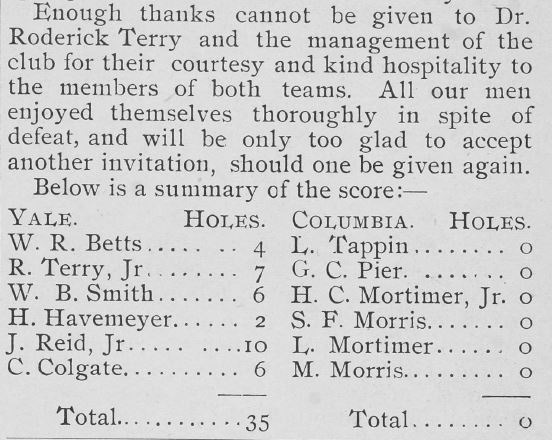
Yale’s team victory earned them a nice silver trophy and each of the players were awarded silver medals inscribed with the date and event to commemorate their individual match victory.
Yale brought their spoils back to campus and proudly placed it among the many others in their gymnasium trophy case. It is currently unknown if the school still possesses this trophy and unfortunately a picture of it has not yet been found.
Founding of the IGA
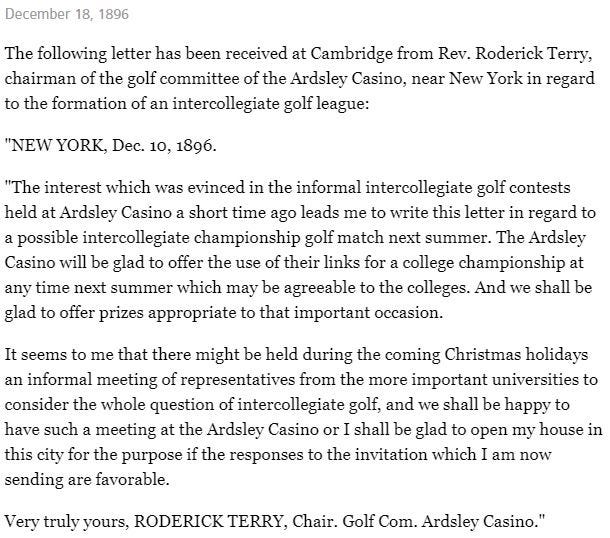
With the first match considered a great success, the teams got excited for the next stage which would involve a full championship. Once again it was Dr. Terry who led the charge on formalizing collegiate golf, sending the above letter to each of the universities originally invited.
The goal was to institute an official committee capable of organizing future events, run by the players themselves as representatives for their respective university. This concept of a student-run governing body wasn't as strange at the time considering it was the students/players themselves that ran the teams, and it plays an important role in understanding the future development of the sport. Take note of the names listed below.
In just a few short months college golf went from an interesting idea to an official sport with the birth of the Intercollegiate Golf Association (IGA) to start 1897.
The 125th Anniversary Match: 1896-2021
In 2021, Yale coach Colin Sheehan got together with Columbia’s coach and Director of Golf, Rich Mueller, to recreate the match in celebration of the 125 year anniversary. In late October, the two schools met at the historic St Andrew’s Club (NY) which was fitting for being both the current home course for Columbia as well as the site of the match involving the first Yale team almost exactly 125 years prior.
The anniversary match featured current players representing one of their past teammates playing the same holes-won format, now an oddity to today’s college golfers. By all accounts it was a complete success and an incredibly cool tribute to the start of collegiate golf. 125 years later, Columbia got their revenge with a 15 holes to 2 win over Yale.
Up Next: The First Championship (1897)
In the next post for this series we will cover the first Intercollegiate Championship. In all likelihood we'll actually cheat and discuss the first two.

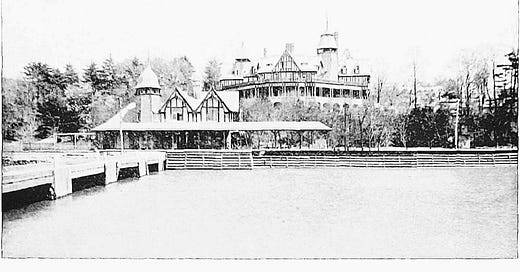



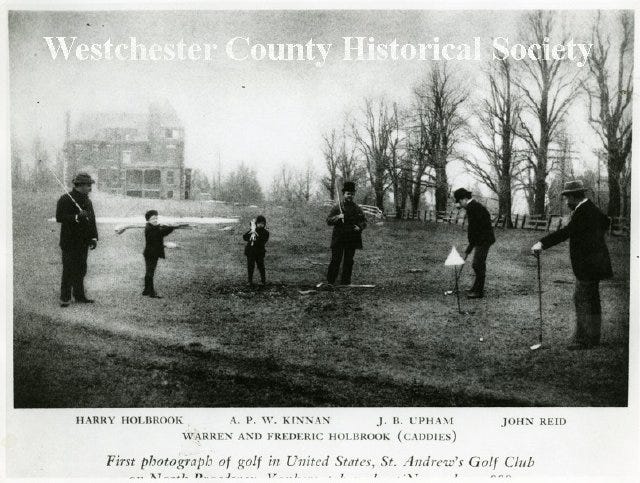
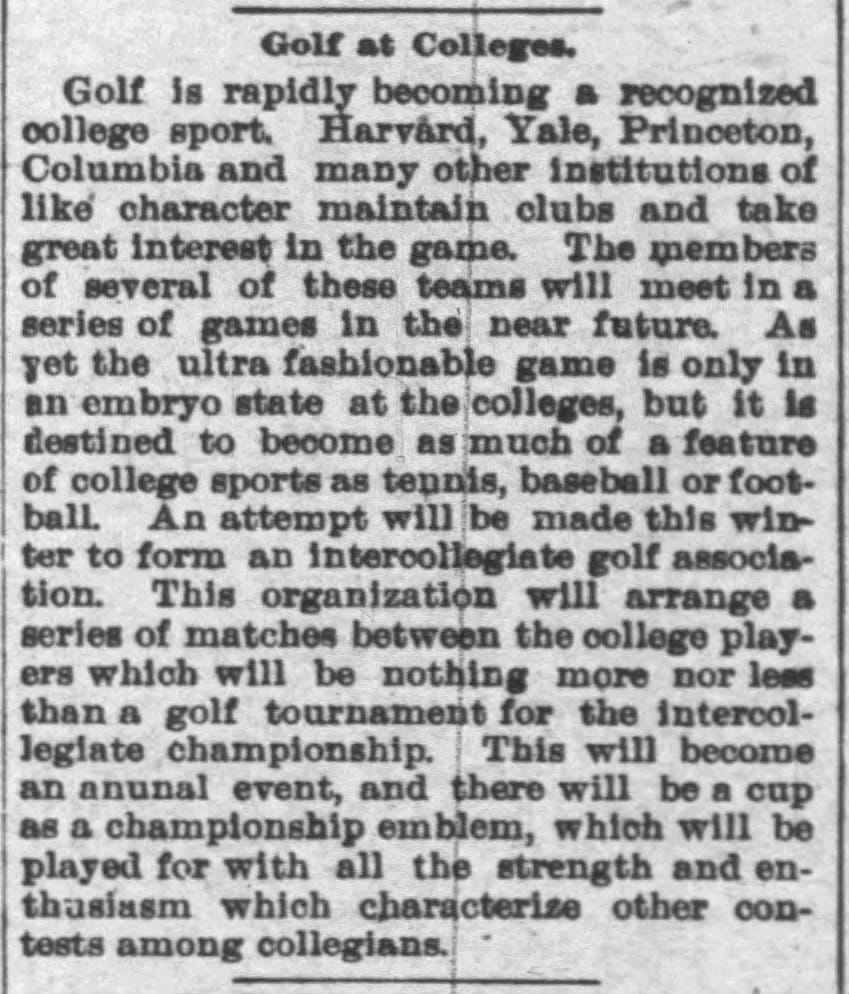




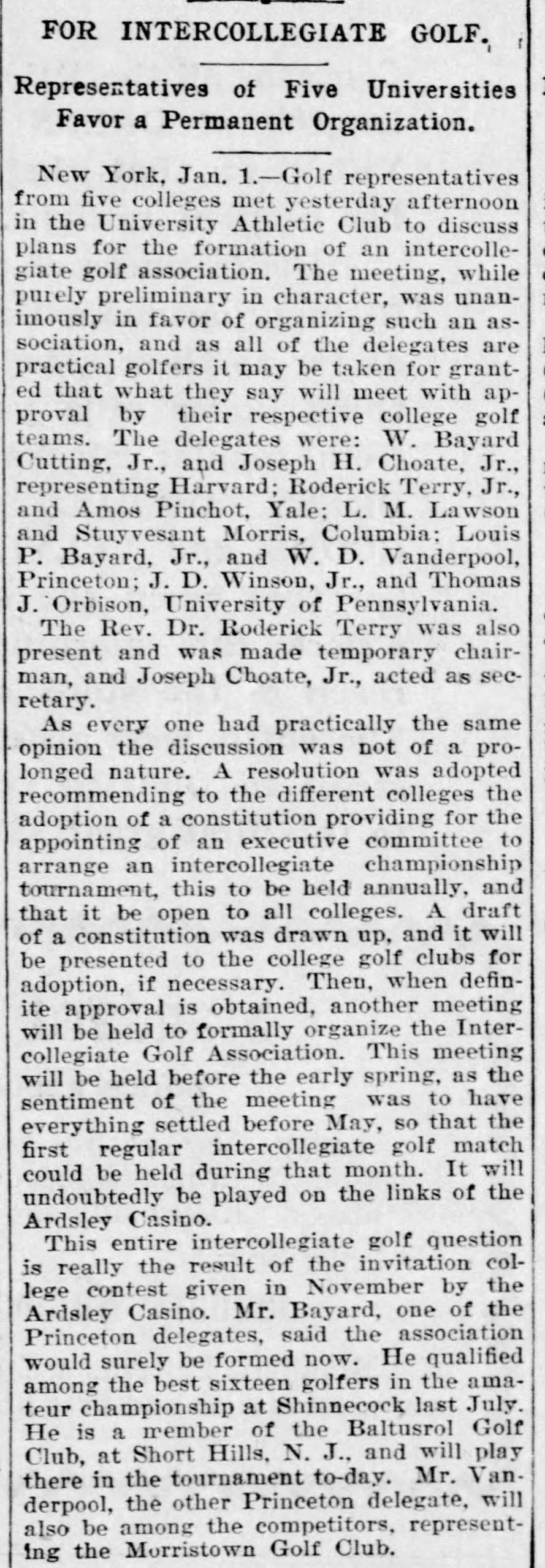
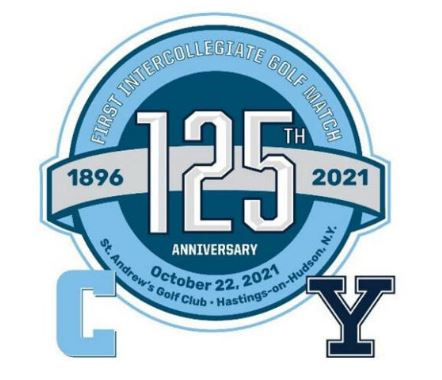
I always love seeing old newspaper clippings but seeing the picture and clipping shown the Origin section was truly something else! Your writing and these snapshots of history really make the story come alive!